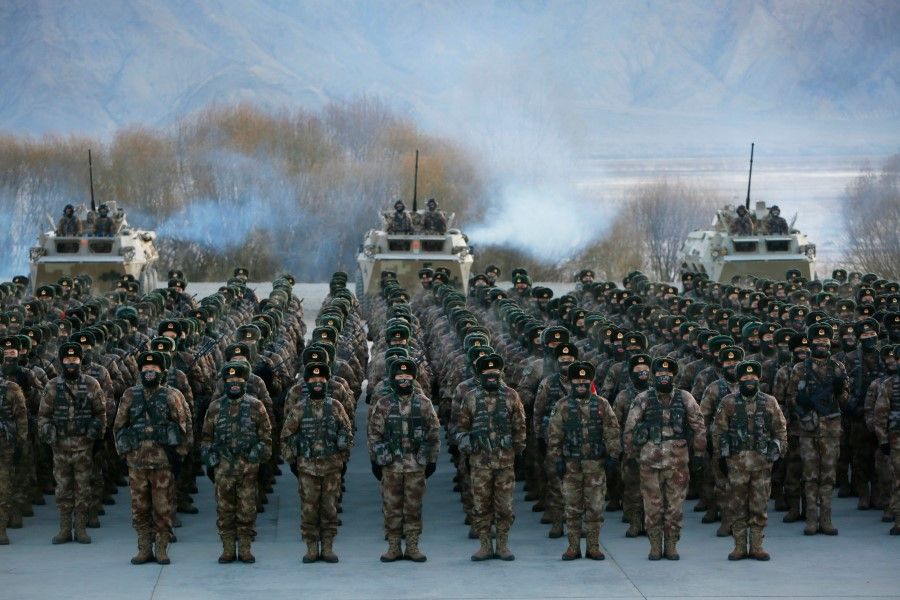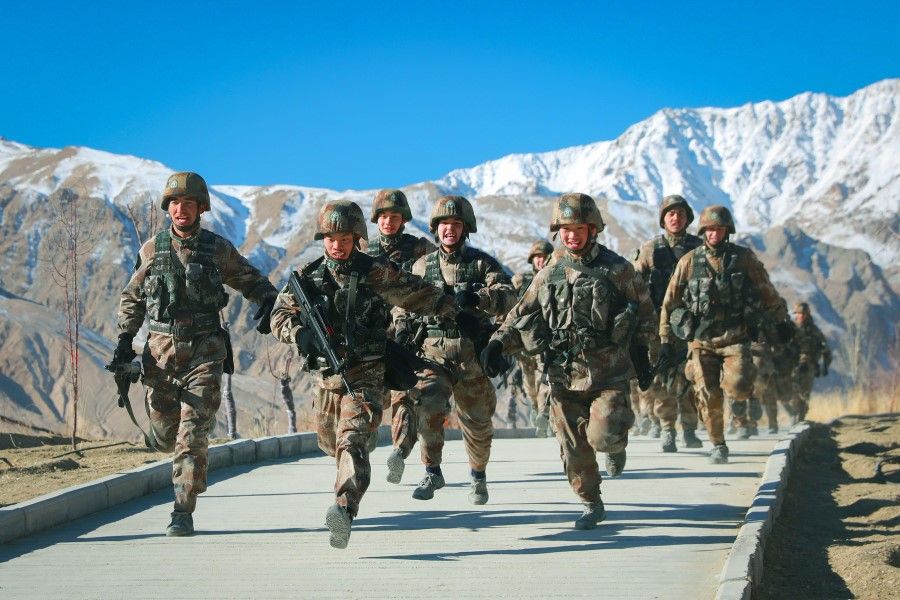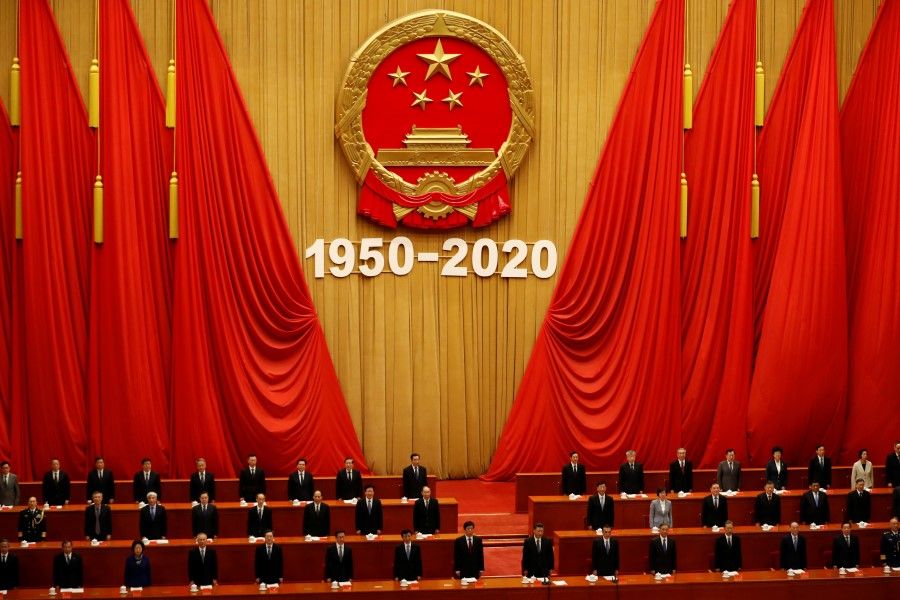Japanese academic: China needs to show more self-restraint in PLA's military activities

In 2020, many countries around the world faced the threat of Covid-19. China was blamed for the Covid-19 pandemic but it took rigorous action such as locking down the city of Wuhan, which was believed to be the source of the outbreak, and then successfully brought the outbreak under control through the ongoing implementation of thorough infectious disease control measures using various cutting-edge technologies. As a result, whilst other major economies have suffered economic contraction due to Covid-19, China is regarded as the only economy to have achieved positive growth, and it has gone on to reveal itself as a formidable presence in the international community once again.
However, China has damaged its relations with Western powers through diplomatic posturing sometimes referred to as "wolf-warrior diplomacy." China's relations with the US in particular, which were already under strain because of disputes such as the South China Sea and Taiwan issues, as well as trade and economic conflicts, have grown increasingly confrontational.
With the Trump administration attempting to encircle China by starting to strengthen US-Taiwan relations, maintaining its involvement in the South China Sea issue, and criticising China over Covid-19, the Chinese leadership's primary intention was presumably to keep such moves in check by demonstrating China's own military strength.

The PLA has been stepping up its military activities
Against this backdrop of deteriorating diplomatic relations, the Chinese People's Liberation Army (PLA) has stepped up its military activities more than ever before throughout 2020.
In February, the PLA conducted drills for joint operations between the PLA Navy and Air Force near Taiwan, and in April, it sailed a naval flotilla headed by the aircraft carrier Liaoning through waters near Taiwan again. The PLA's aircraft have also repeatedly flown into Taiwan's air defence identification zone (ADIZ), which serves as a buffer between China and Taiwan, and conducted military exercises to coincide with a senior US diplomat's visit to Taiwan.
The PLA also frequently conducted military drills in the South China Sea. Most notably during drills held in August, it fired a DF26B missile nicknamed the "Guam Killer" and a DF21D missile referred to as the "carrier killer" and succeeded in hitting a moving target ship. The PLA has also escalated tension with India on the China-India border, causing a standoff which resulted in the deaths of at least 20 Indian soldiers in June. Meanwhile, in the East China Sea, the China Coast Guard, which is now controlled by the Chinese People's Armed Police Force, sent its vessels into the contiguous zone near the Senkaku Islands (Diaoyu islands to the Chinese) for the longest stretch on record.
These military activities are likely to have been conducted under the direction of each theater command following orders from the military leadership headed by Xi Jinping, Chairman of the Central Military Commission (CMC). With the Trump administration attempting to encircle China by starting to strengthen US-Taiwan relations, maintaining its involvement in the South China Sea issue, and criticising China over Covid-19, the Chinese leadership's primary intention was presumably to keep such moves in check by demonstrating China's own military strength.
...the commentary in the PLA Daily stated that China had to accelerate the transition from passively adapting to war to actively designing how a war is fought."

In November 2020, the CMC released "Guidelines on PLA Joint Operations (trial)". At the time, the PLA Daily, the PLA's official newspaper, stated in the form of a commentary that the PLA would more actively plan how a war is fought. In the same month, Xi Jinping noted at a CMC meeting on military training that new changes were taking place in China's security environment and ordered the armed forces to strengthen a new training system to accommodate needs in real combat and raise their training level and capability of winning wars. On this occasion also, the commentary in the PLA Daily stated that China had to "accelerate the transition from passively adapting to war to actively designing how a war is fought".
The year 2020 had been touted as the year in which the military reforms led by Xi Jinping would come to fruition - the year "to generally achieve mechanisation... with significantly enhanced informationisation and greatly improved strategic capabilities." The PLA's actions in recent years suggest that this goal has been largely achieved.
...the escalation of the PLA's military activities is the single most destabilising factor in East Asia and, for this reason, China needs to show a little more self-restraint.
Accordingly, at the 5th plenary session of the 19th CPC Central Committee in October 2020, China set a new short-term goal of building a fully modern military by the year 2027, which marks the centennial of the PLA's founding. With the joint operational framework now in place thanks to the military reforms, the PLA Daily thus stressed the need to conduct drills to enhance its joint operational capability under the new framework.
In light of such remarks by China and media reports, China will no doubt continue stepping up the PLA's military activities in the Taiwan Strait, South China Sea and East China Sea during 2021. If the new Biden administration maintains the Trump administration's stance on the Taiwan and South China Sea issues, China risks ramping up such activities even further to hold the US in check. However, the escalation of the PLA's military activities is the single most destabilising factor in East Asia and, for this reason, China needs to show a little more self-restraint.
Related: What has changed in China's South China Sea policy under Xi Jinping? | Will China establish military bases in Southeast Asia? | Japanese academic: Can the PLA succeed in its smart warfare transformation? | Peaceful or armed reunification: Are top Chinese advisers divided over Taiwan? | 50 years later, is China 'preparing for war' again?
